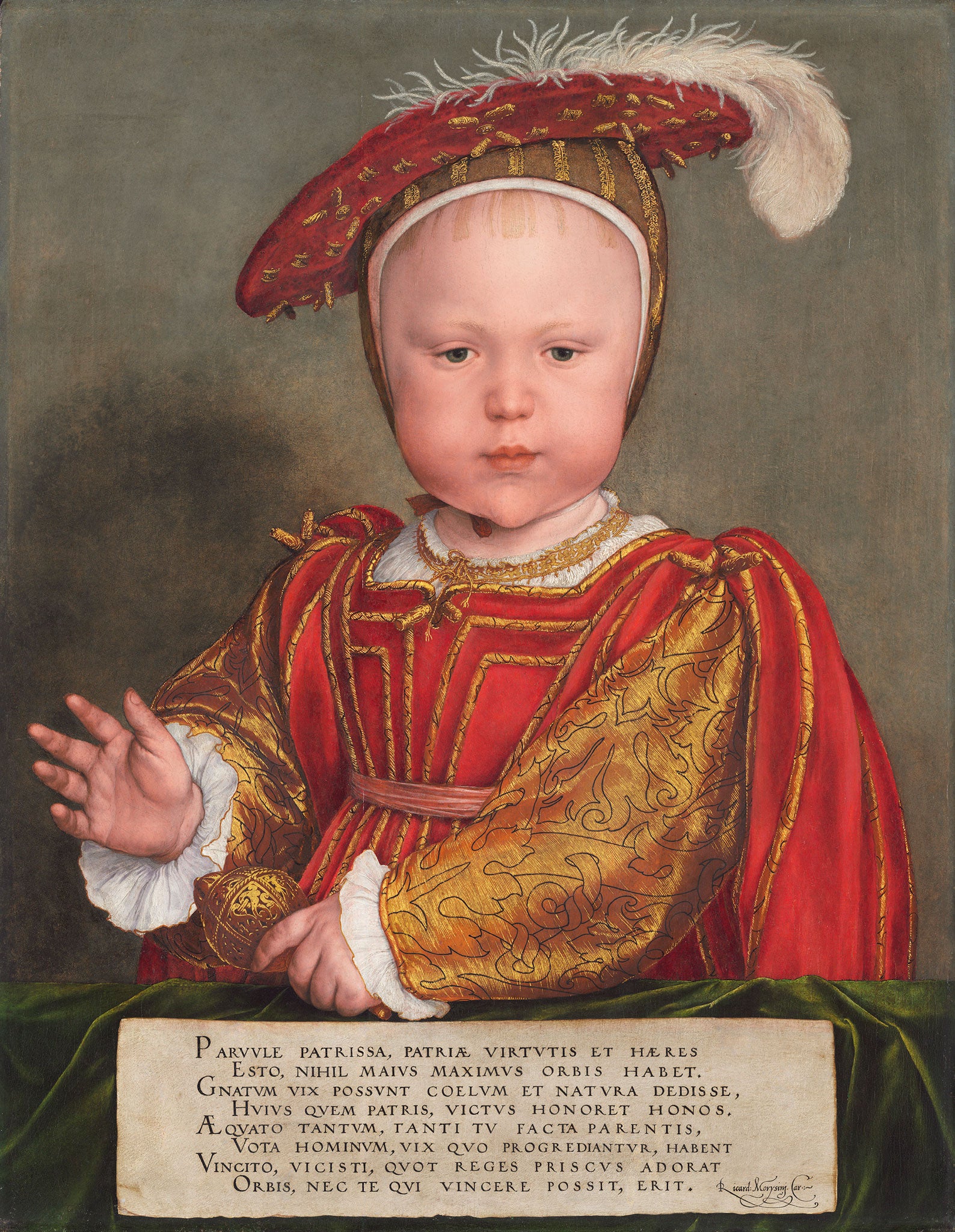Great works: Edward, Prince of Wales (later Edward VI) by Hans Holbein the Younger, circa 1538
National Gallery of Art, Washington DC

When William Wordsworth wrote that the child is father to the man, he expressed an idea that would have been beyond the ken of Hans Holbein the Younger, painter to the Tudor dynasty. To Wordsworth, childhood was a hallowed moment. The child was to be revered for its own sake. That spark of the divine would fade in time. Holbein's child is an earthbound being who is entirely defined by the promise of his future. It is a wonderfully cunning act of homage to a severe taskmaster. It is also, at least in part, a thankyou note.
From 1537 and on until his death 16 years later, Hans Holbein the Younger's task was to aggrandise the Tudor lineage in paintings, and to do various other ancillary tasks, such as be in-house designer of precious metalwork and important domestic objects – from daggers to chimney-pieces – and also to paint several murals which, alas, were entirely destroyed by the great fire that engulfed Whitehall Palace in 1698.
His primary task of immortalising the Tudors was carried out most monumentally, and most finically – our eyes crawl greedily across the extraordinary detailing of face and precious adornments – in his triumphalist portrait of Henry VIII, which was painted around 1537. About a year later he painted a miniature of the sole male heir, who would later become Edward VI.
This is child as monarch in waiting, aping the gestures of a king as if by some magically innate understanding of what will come to be expected of him in due course. An elaborate Latin inscription not only makes his duties clear, but also makes us aware of his position. Speaking much of the glories of the father, it ends with this: "Surpass him and you have surpassed all the things ever revered and none will surpass you."
Everything hinged on the fate of this boy, and Holbein probably made a wise move when he not only made the work but, unusually, made a gift of it to Henry himself at New Year. Interestingly, the painting does not over-strive to flatter – if you look at a coloured chalk drawing of the boy executed in that same year, you will see once again those strangely podgy, hamster-ish cheeks and that rather ugly nob of a miniature billiard ball of a chin. What also interests us is that this child was barely more than a babe. He had been born on 12 October 1537 to Jane Seymour, Henry's third wife, and this work is dated 1538.
In that same year Holbein did a coloured chalk drawing of that same face, though on a slightly smaller scale. The tiny nub of a nose and the long brow are there. Did he manage to transfer this drawing when he came to make the painting, adding the clothes by way of an embellishment? Probably. We are accustomed to seeing children tricked out like adults, less familiar when it is small babes.
What is more, this babe is making a pretence at gesturing like a king. His toy rattle looks like a sceptre of sorts at rest. His right palm is raised, as if he has the wit to address us, to calm our fears, to provoke us into acknowledging who exactly, in time, he will come to be. Its skilfully managed air of serenity is quite delightful. This babe knows all about kingly composure, that deference which is due from the lowly to the exalted. He is cut off at the midriff. This also suggests, at least in part, that he is in the line of Roman portrait busts, posed on a moralising plinth.
About the artist: Hans Holbein The Younger (1497/8-1543)
Hans Holbein the Younger, son of painter and draughtsman Hans Holbein the Elder, was born in Augsburg and worked much of his adult life in England. He had a wife, Elsbeth, in Basel, and had two children in England. He died aged 45, perhaps of the plague.
Subscribe to Independent Premium to bookmark this article
Want to bookmark your favourite articles and stories to read or reference later? Start your Independent Premium subscription today.

Join our commenting forum
Join thought-provoking conversations, follow other Independent readers and see their replies